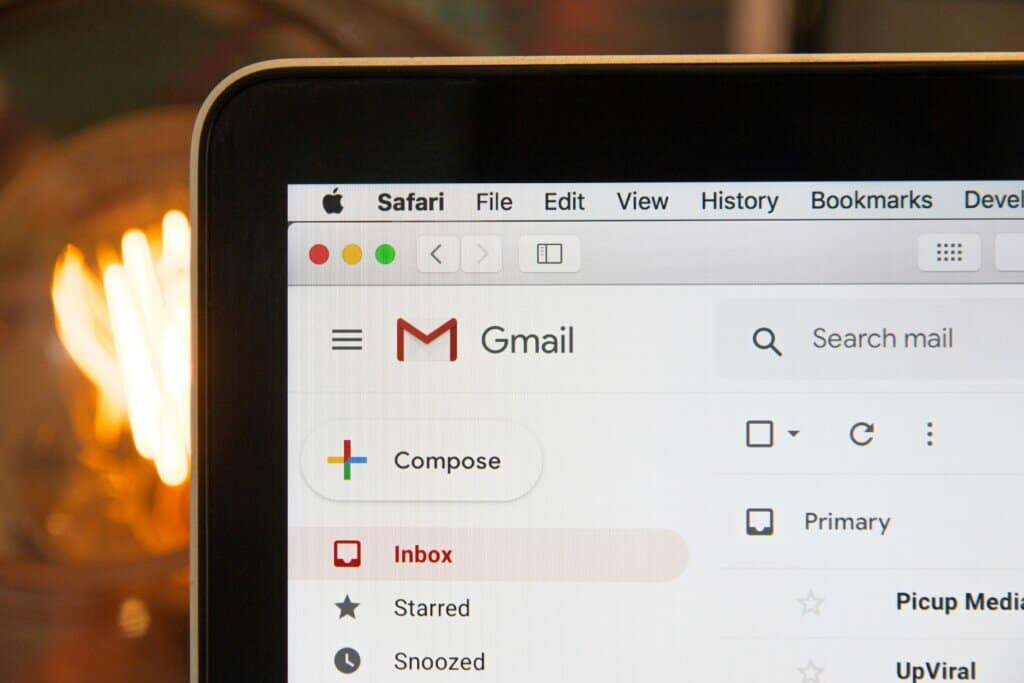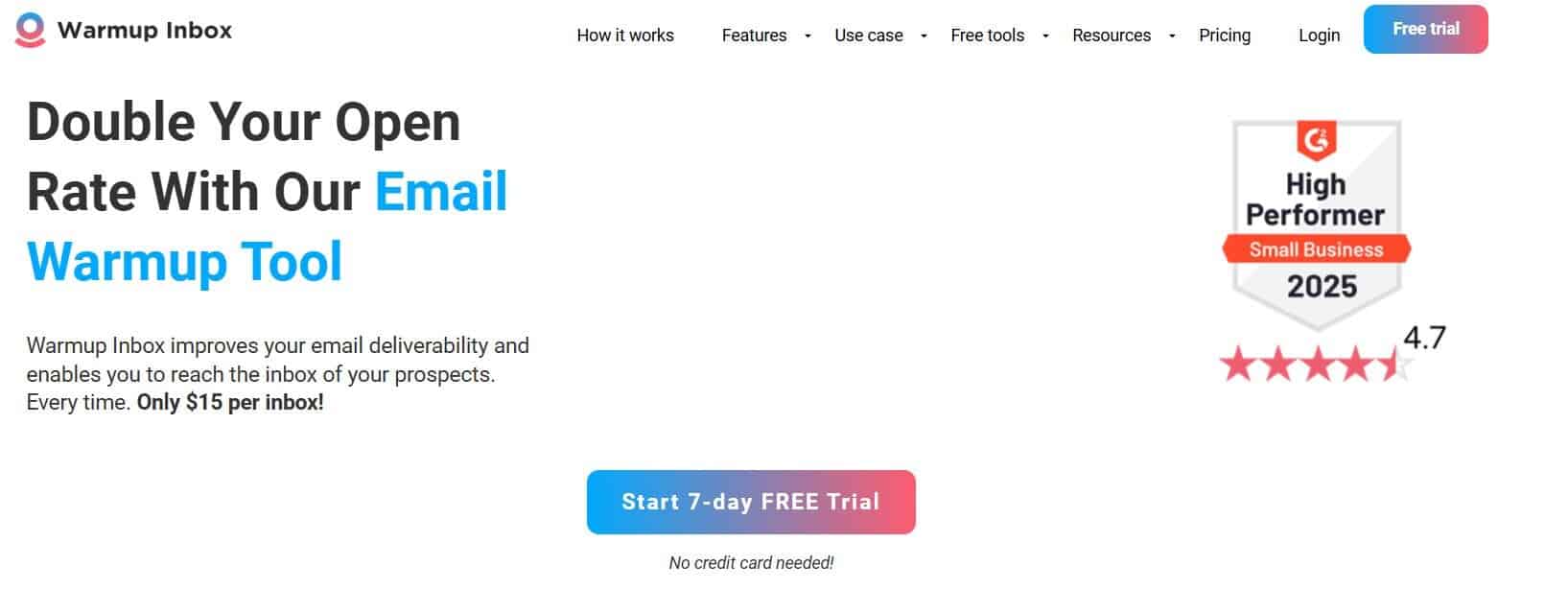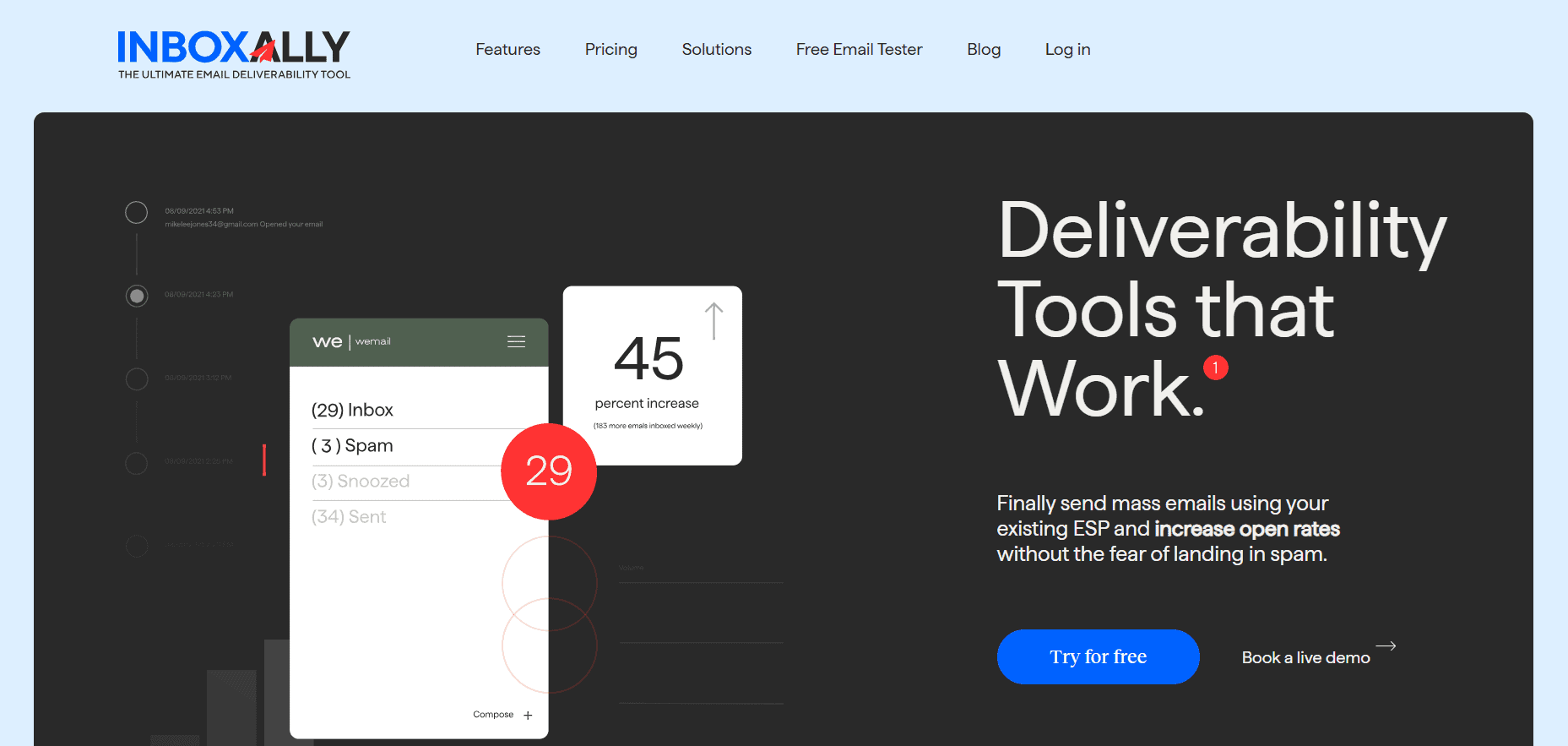Last Updated on November 28, 2025 by Ewen Finser
If your emails keep ending up in spam — or worse, never get delivered — the issue might not be your subject lines or content. A hidden culprit could be spam trap emails on your list.
I’m an Executive Assistant in the marketing and operations world, and email reputation management is a big part of my life – after all, there’s always going to be someone who clicks the link in the spoofed email.
I’ll show you how to find spam trap emails easily, the warning signs to look for, and then I’ll review two of the most popular email deliverability tools on the market: InboxAlly and Warmup Inbox. I’ve tested both, and I’ll share the pros, cons, and which one I think is best depending on your situation.
What Are Spam Trap Emails?
Spam traps are special email addresses created by inbox providers (like Gmail, Yahoo, Outlook) and anti-spam organizations. They look like normal addresses, but their only purpose is to catch senders with bad practices and lower their sender reputation.
There are three types of spam trap emails:
- Pristine traps – brand new addresses never used by a real person, only created to catch spammers.
- Recycled traps – old, abandoned inboxes that providers repurpose as traps.
- Typo traps – small mistakes like gmial.com or yaho.com.
If you send emails to these addresses, inbox providers assume your list is poorly maintained — and your deliverability plummets. Whether you’re building a new business or reaching out to your existing customer base, this is something that will tank your outreach.

How to Find Spam Trap Emails Easily
The challenge with spam traps is that they look normal. You can’t just glance at your list and pick them out. But here are some easy methods to spot potential spam traps:
- Check engagement
- Spam traps never open, click, or reply. If you have addresses that show zero engagement for months, remove them.
- Look for typos
- Obvious domains like gmial.com, hotmial.com, yaho.com are classic traps.
- Monitor deliverability
- A sudden drop in open rates or inbox placement often signals that you’ve hit spam traps.
- Audit list sources
- If contacts came from purchased lists, scraped websites, or giveaways without double opt-in, they’re very likely to include traps.
The fastest solution is using an email validation service like ZeroBounce, NeverBounce, or Kickbox. These tools automatically scan and flag risky, invalid, or trap-like addresses.
Why Cleaning Your List Isn’t Enough
Finding and removing spam traps is step one. But if you’ve already been sending to them, your sender reputation may be damaged.
That means inbox providers already distrust your domain — and even your legitimate subscribers might not see your emails because they’re landing in spam.
To fix this, you need to rebuild trust with inbox providers. That’s where deliverability engagement tools like InboxAlly and Warmup Inbox come in.
Warmup Inbox Review

Warmup Inbox is one of the most popular email warmup services recommended for starting businesses, and it offered a free trial – something not a lot of other email warmup services offer. Being able to trial run a service without having to sit through three sales calls? Yes, please.
Warmup Inbox works by connecting your mailbox to the Warmup Inbox. It then sends out emails daily from your inbox to a network of inboxes controlled by Warmup. Those emails are automatically opened, starred, and occasionally have replies – all the things that help teach providers like Gmail and Outlook that your emails are safe. How? By mimicking what a real person on your mailing list would be doing when they receive your marketing emails. And by mimicking this repeatedly those providers will realize that your emails need land exactly where you want them.
The pros for Warmup Inbox? It’s budget-friendly and has great reviews for warming up new domains. They have a pretty cool drip campaign option for cold outreach campaigns, and a plethora of free tools like their Free Email Spam Words Checker and an Email Signature Generator.
The cons? You get what you (don’t) pay for – I love tech and I’m typically the go-to for setting things up, but I couldn’t get my email to connect for the trial. My email was with a provider not supported (though Warmup Inbox does cover the big ones like Gmail and Outlook), and the backup account couldn’t get connected. I tried to use the free spam checker to see if my emails were landing in inboxes, and the page is still spinning.
Overall, Warmup Inbox seems to be a great option for startups, freelancers, or small businesses who want a low-cost way to build their email reputation from scratch and have the patience to work through the tech glitches.
You might also be interested in: Best Warmup Inbox Alternatives
InboxAlly Review

InboxAlly is another powerful email deliverability tool, but it takes a different approach, giving you full control over how inboxes interact with your emails, as well as a free trial to flex their muscles.
InboxAlly doesn’t do just automated engagement like many of its competitors and it doesn’t connect to your email in the same way – instead you create campaigns inside of InboxAlly’s dashboard that are sent directly from there, with you controlling the engagement you want: clicks, open, reply, mark important, and pull from spam. This makes InboxAlly an incredibly powerful tool for businesses looking to email reputation repair.
The pros of InboxAlly? The setup was amazingly easy. The dashboard gave metrics I could understand. It’s transparent and quick to learn and navigate. And their customer service? They connected with me on LinkedIn within hours of my free sign up. And not just with some AI bot – a real account rep. I told him like I’ll tell ya’ll: that was impressive. But my favorite part of InboxAlly was their Email Spam Word Checker – not only did it highlight the words and give alternatives, it also gave email header options (and writing good email headers is the bane of my existence).
InboxAlly is the comprehensive suite I need to solve challenging deliverability problems across the board. It's like a triage hub for diagnosing and fixing email deliverability rates in one dashboard. I've tried a lot of tools, but this is the one I've stuck with.
The cons? It’s expensive and it’s not meant for warming up new domains – this is the one you want when you’re already landing in spam.
Overall, InboxAlly is best for established senders who need to repair reputation and improve inbox placement after being flagged. You may not have been able to control your boss when they clicked that SPAMCLICKEDINVOICE, but you can at least control fixing your reputation moving forward.
Check out our full InboxAlly review here: My 2025 InboxAlly Review: Does this help with email deliverability?
InboxAlly vs Warmup Inbox: Side-by-Side
Here’s a direct comparison of the two tools:
Feature | ||
Core Purpose | Warm up new domains/accounts | Repair reputation & restore inbox placement |
Ease of Use | Some setup snags | Easier to navigate |
Customization | Low — automated engagement only | High — control over opens, clicks, replies |
Email Provider Support | More limited | Broader support |
Price | Budget-friendly | More expensive |
Best For | Startups, freelancers, new senders | Businesses with reputation issues or spam trap hits |
Summary
- Warmup Inbox = best for small businesses and startups starting fresh.
- InboxAlly = better for established senders needing deeper reputation repair.
Best Practices to Avoid Spam Traps
No matter which tool you choose, the best defense against spam traps is prevention:
- Always use double opt-in for new subscribers.
- Clean your list every 3–6 months.
- Stop mailing subscribers who haven’t opened in 90–120 days.
- Never buy or rent email lists.
- Monitor bounce and complaint rates closely.
Final Thoughts
Finding spam trap emails isn’t about catching one suspicious address — it’s about recognizing patterns: zero engagement, typos, shady list sources.
Once you’ve cleaned your list, you may still need help repairing deliverability. That’s where email deliverability tools come in.
- Warmup Inbox is affordable and beginner-friendly, great for new domains.
- InboxAlly is more expensive but easier to navigate and much stronger for repairing reputation after spam trap issues.
Choose the one that matches your situation, and pair it with consistent list hygiene. That way, your emails land where they belong — in the inbox.


